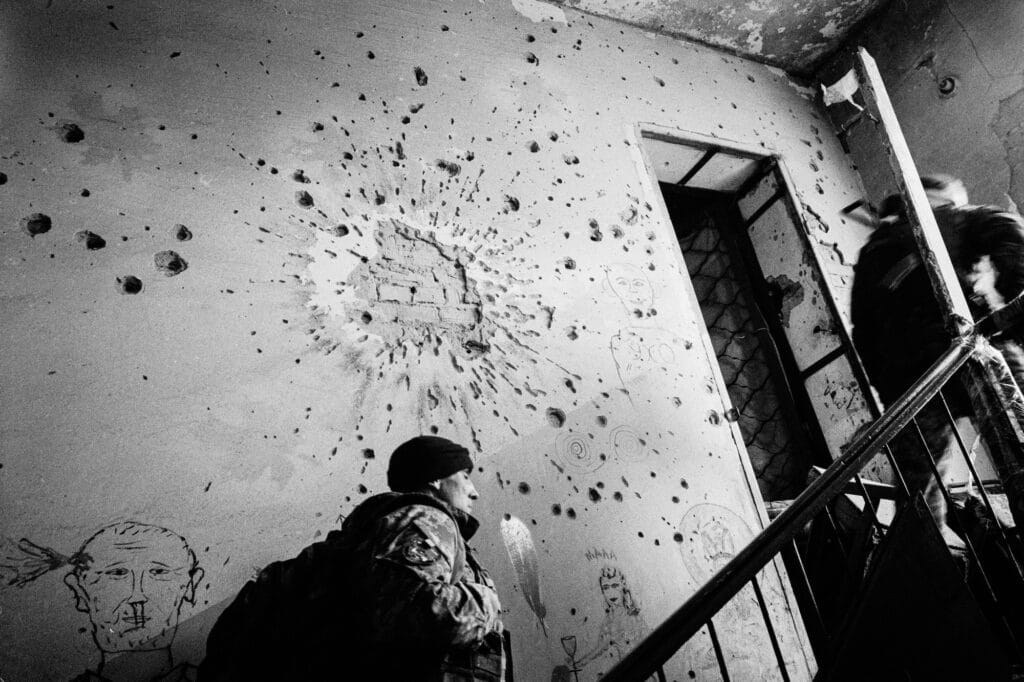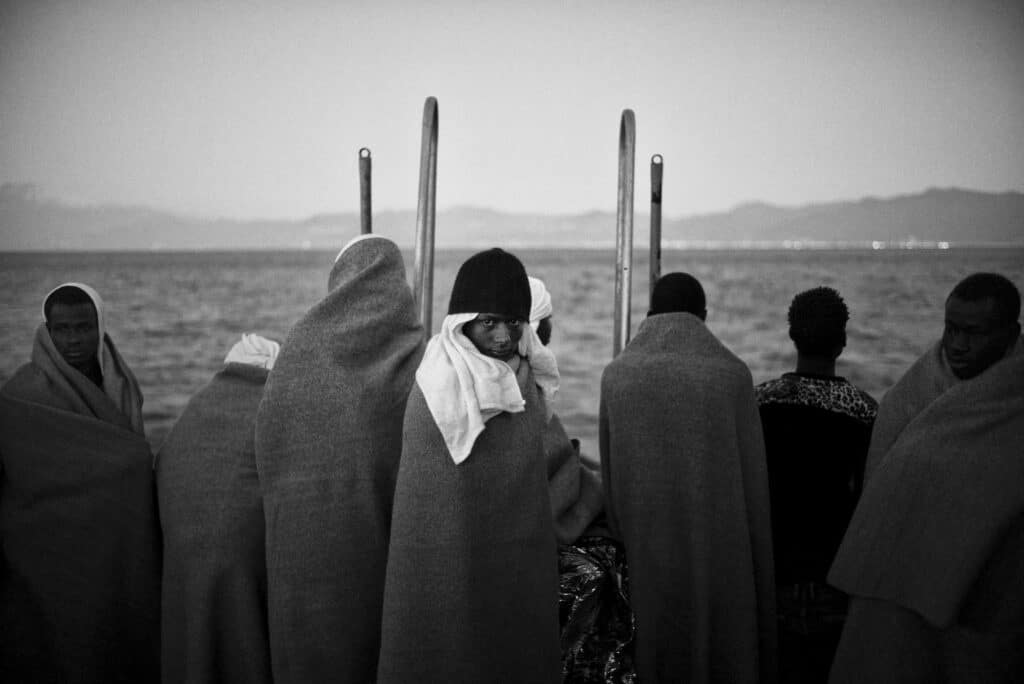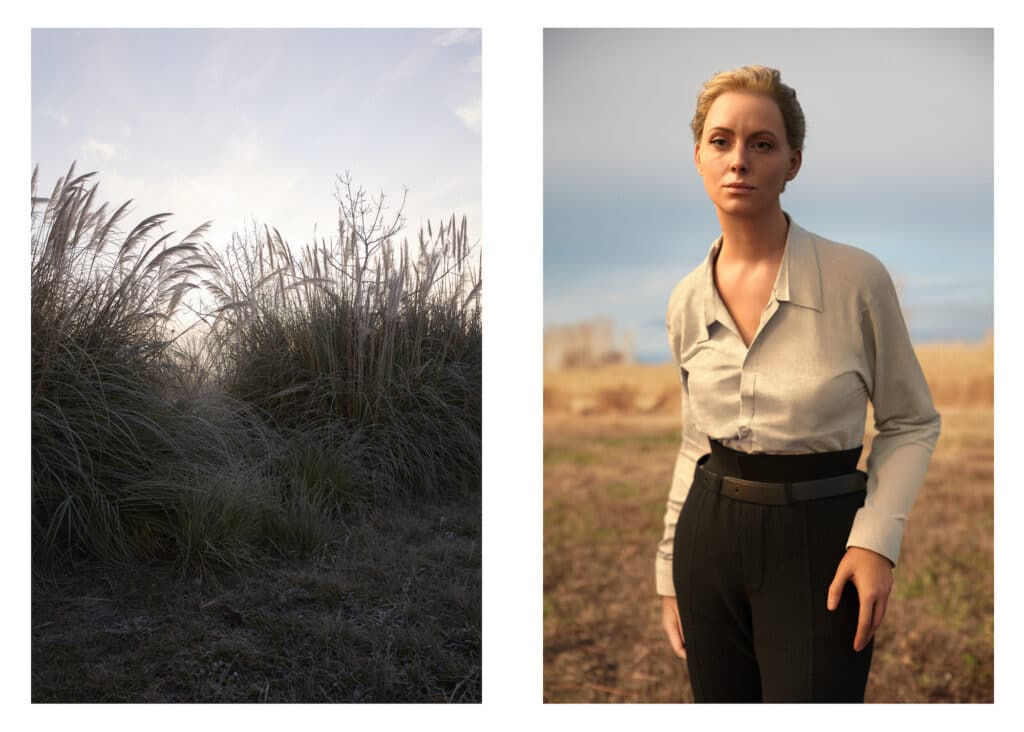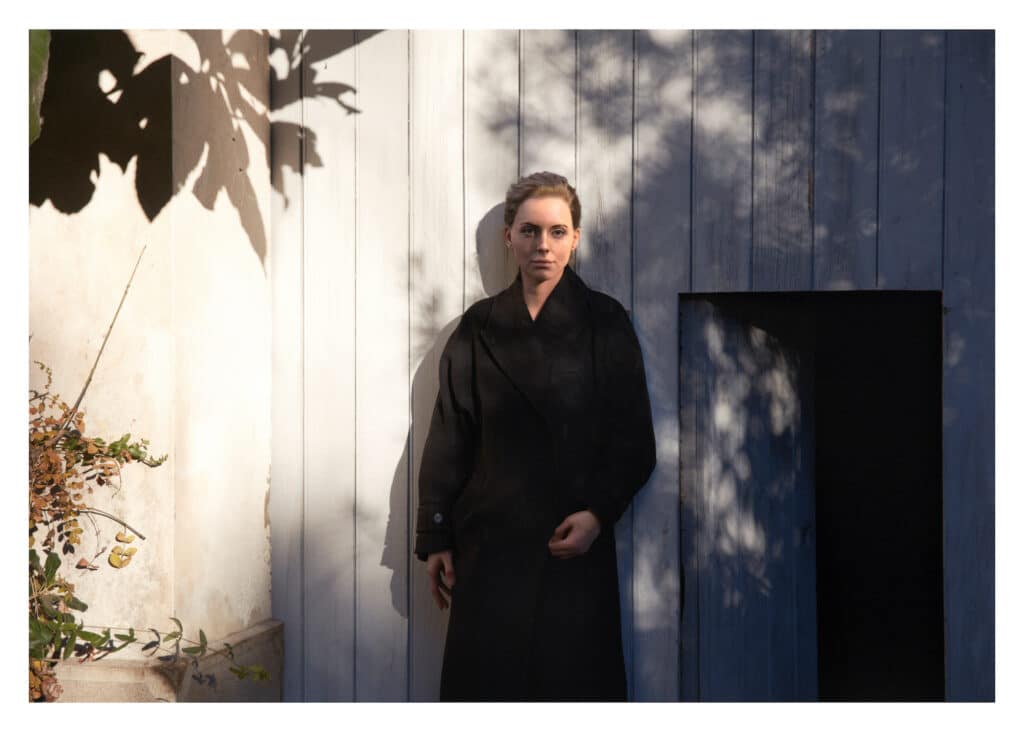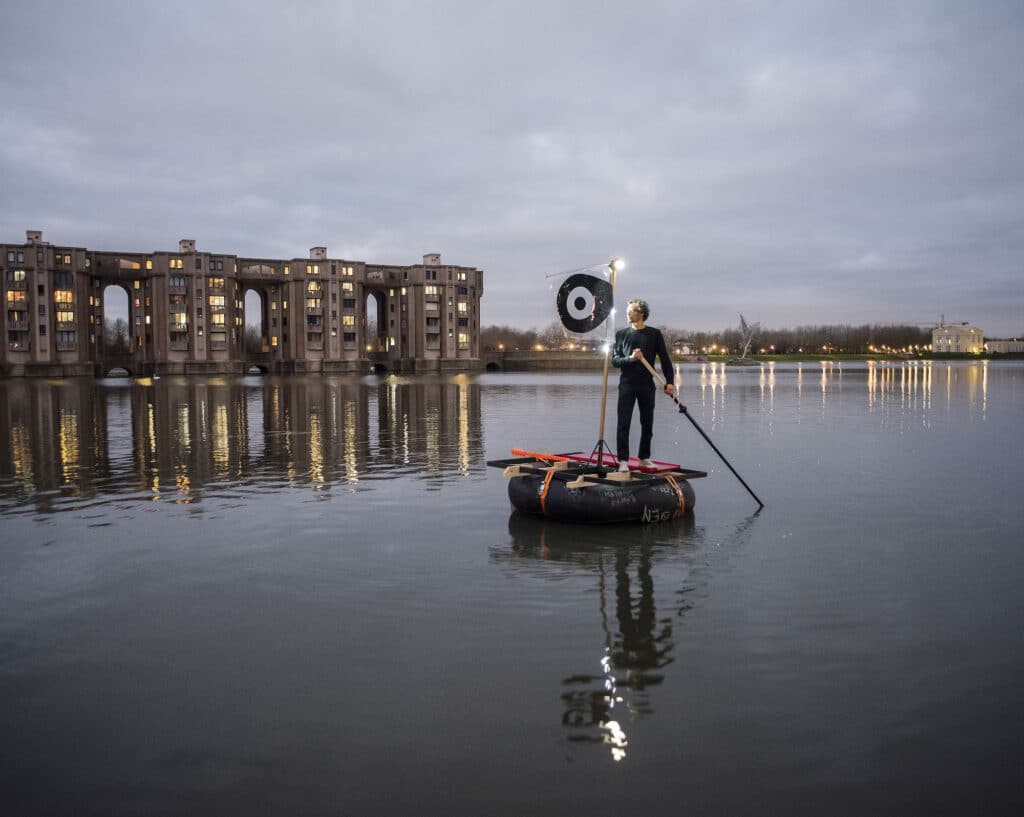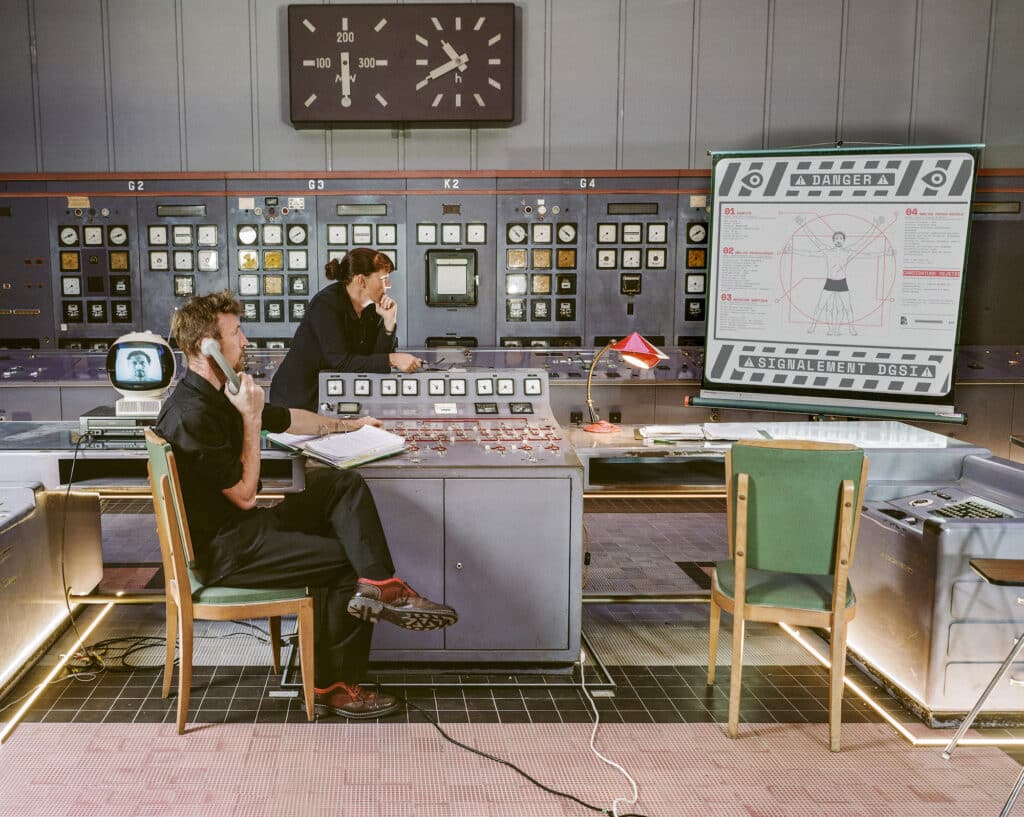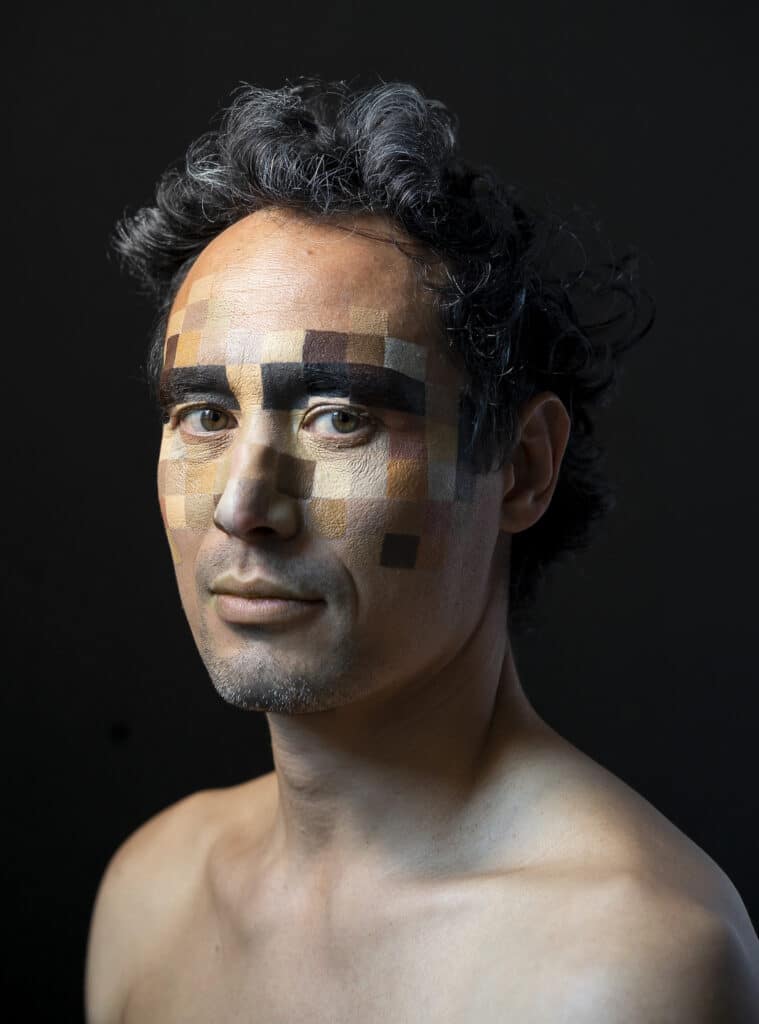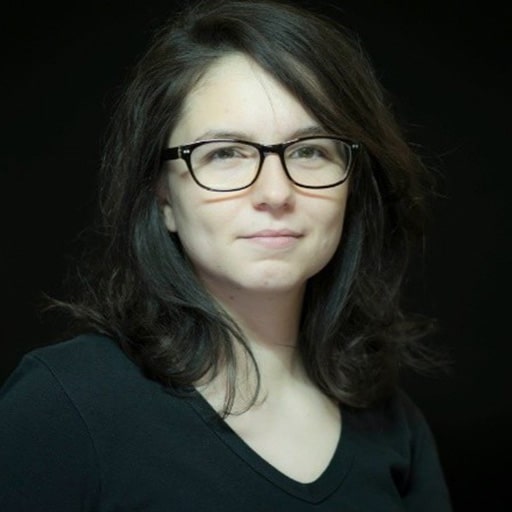It’s a bit of a paradox. The 2023 edition of Promenades photographiques is both the nineteenth iteration of the event… and the first. Could this be the Schrödinger’s cat of photo festivals? Not at all. The enigma is unlocked with the words of a famed Italian scholar: “E pur si muove!” (“And yet it moves!”) Galileo’s formula serves as the title of this year’s event, the first to swap the banks of the Loir River for those of the Loire, and Vendôme for Blois.
The festival may have moved to a new town, but the premise remains the same: to open new perspectives on photography and the world to as wide an audience as possible. This year, through August 30, fifteen exhibitions scattered across the town and the region explore various aspects of movement, whether leading up to experimentation with the medium, driving us to debunk preconceived ideas, or simply related movement inherent in life.
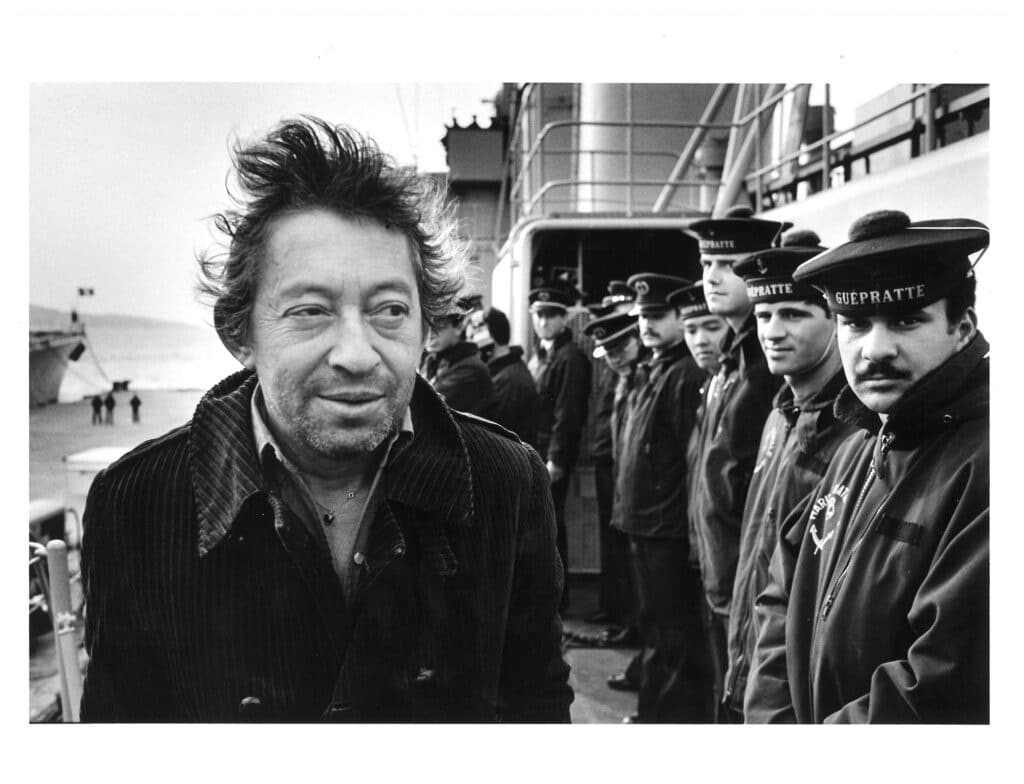
Some exhibitions focus on breaking news, events that will one day go down in the history books. We have arranged to meet at the foot of the imposing château, at the Tourist Office, or rather in its basement. Here, for the first time, Marc Simon presents some of the reports he had produced in a career spanning more than twenty years.
“It seemed essential to me that his account of the world should be shown,” says Odile Andrieu Verguin, the festival’s artistic director. On the payroll of the weekly VSD, the reporter crisscrossed the planet, photographing wars and political events, the banal and the extraordinary: Mitterrand basking in the gold of his Elysée office; the Lebanese in the bloody dust of civil war; children’s games amid the Israeli-Palestinian conflict…
Many of these images lay dormant in the photographer’s archives: he wouldn’t print them because, having taken on the role of the weekly’s director of photography, he preferred to make room for young photographers who were trying to build their careers post-golden age of the press.
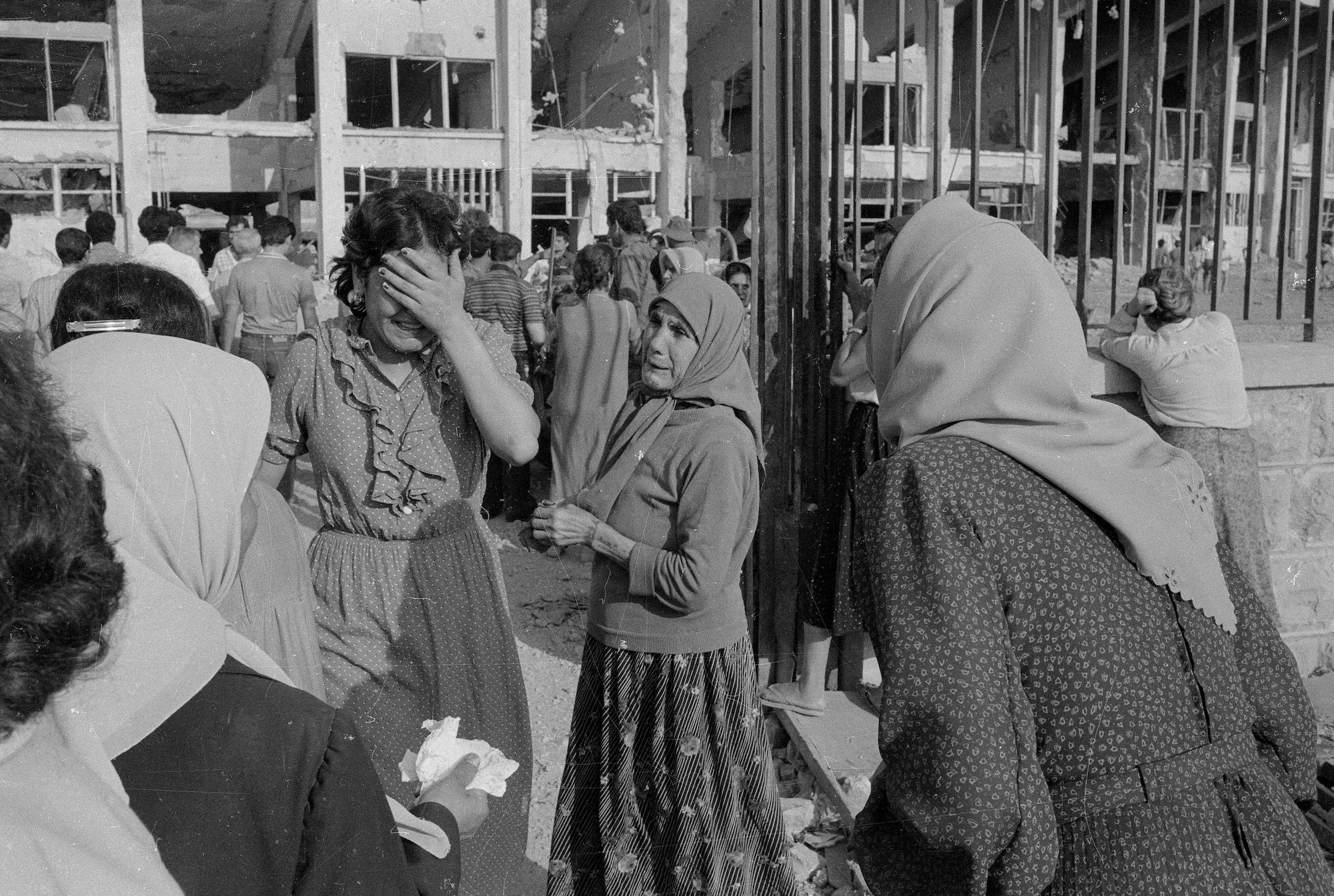
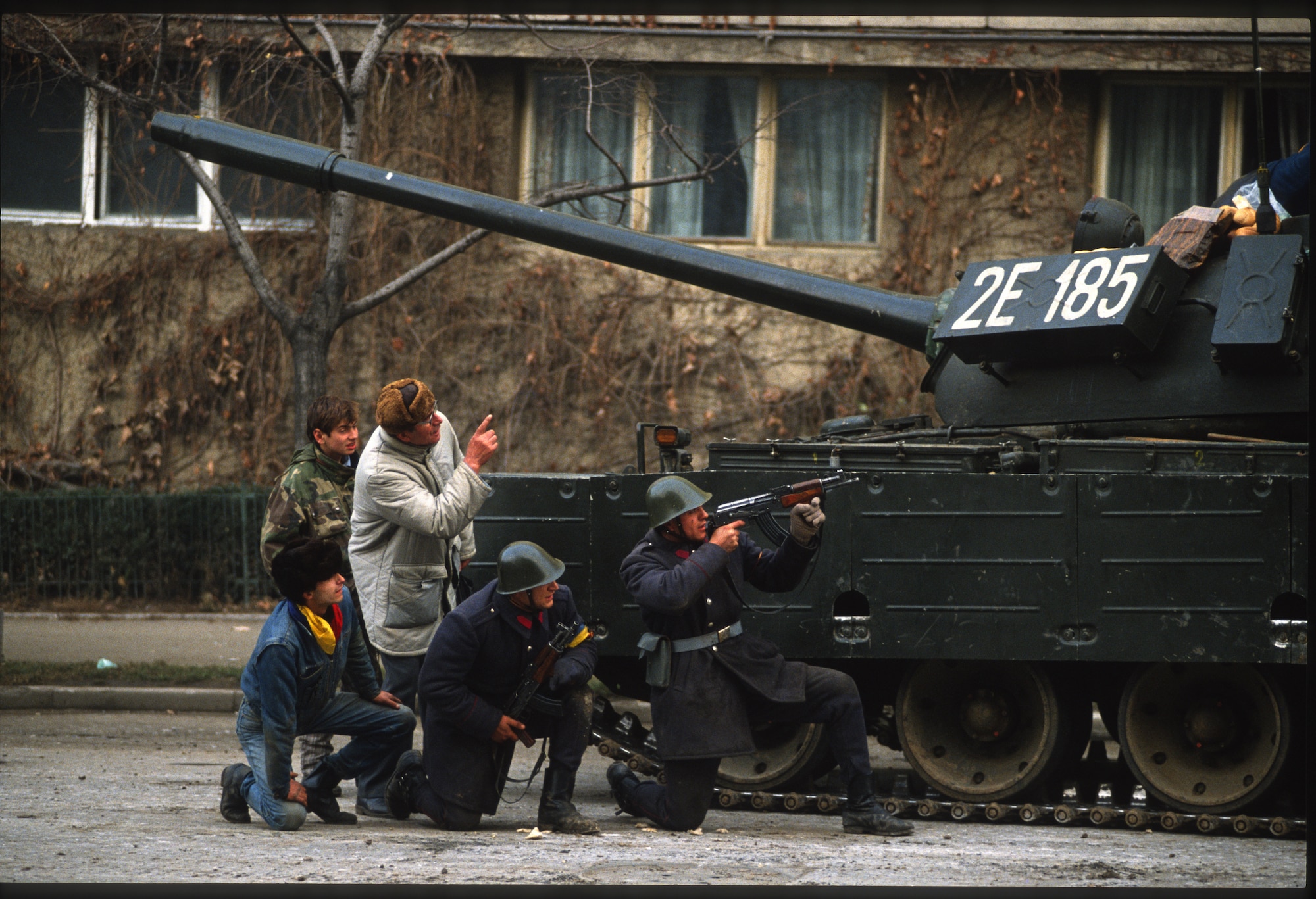
This younger generation includes Édouard Elias, whose images are exhibited alongside those of the man he describes, half-jokingly, as his “papa photo.” The first series, in color, shows Elias’s early work on the Syrian front. Over a stretch of time, he followed the same group of fighters, close to the action, close to the people. Shot in the style of news coverage, the images are, however, full of empathy for those whose suffering he was documenting.
“I photograph reality, crisis zones, people in pain. I think we need to find new ways of arresting the gaze”
Édouard Elias
This sensitivity permeates the other series on view, in which the Frenchman has set aside his digital camera and color in favor of analogue film and intense black and white. “Intense” is the word to describe the oil fires fought by Iraqis; or the haunted gaze of the shipwrecked men crowding the decks of The Aquarius; or the cramped trenches in the Donbass. “I photograph reality, crisis zones, people in pain. I think we need to find new ways of arresting the gaze,” he comments. Arresting the gaze through beauty, through depth, but above all, by appealing to the younger generation. “Right now, I’m mainly interested in school students; that’s the audience I want to reach.”
Spellbinding beauty only better to reflects a tragic reality—that’s also what you find in the shaded alleys of the Bishop’s Gardens at the Évêché. “In 2018, Paradise, burned to the ground in a matter of hours,” says Maxime Riché. “This small California town is in one of the wealthiest regions in the world. And yet the disaster was unavoidable. This is emblematic of what’s happening in the world.”
In the aftermath of the blaze, only 5% of the buildings were intact, and the population fell by over 80% between 2010 and 2020. Nature had quickly regained its footing while humans were only beginning the long process of reconstruction when Riché visited the site. And then the fire returned. Rather than focusing his lens on the fire, the photographer documented the daily lives of those who had chosen to stay. In some shots, the vegetation appears to be aflame and the sky has turned dark—an effect of the infrared film chosen to “plunge the viewer back into the hell of the flames.”
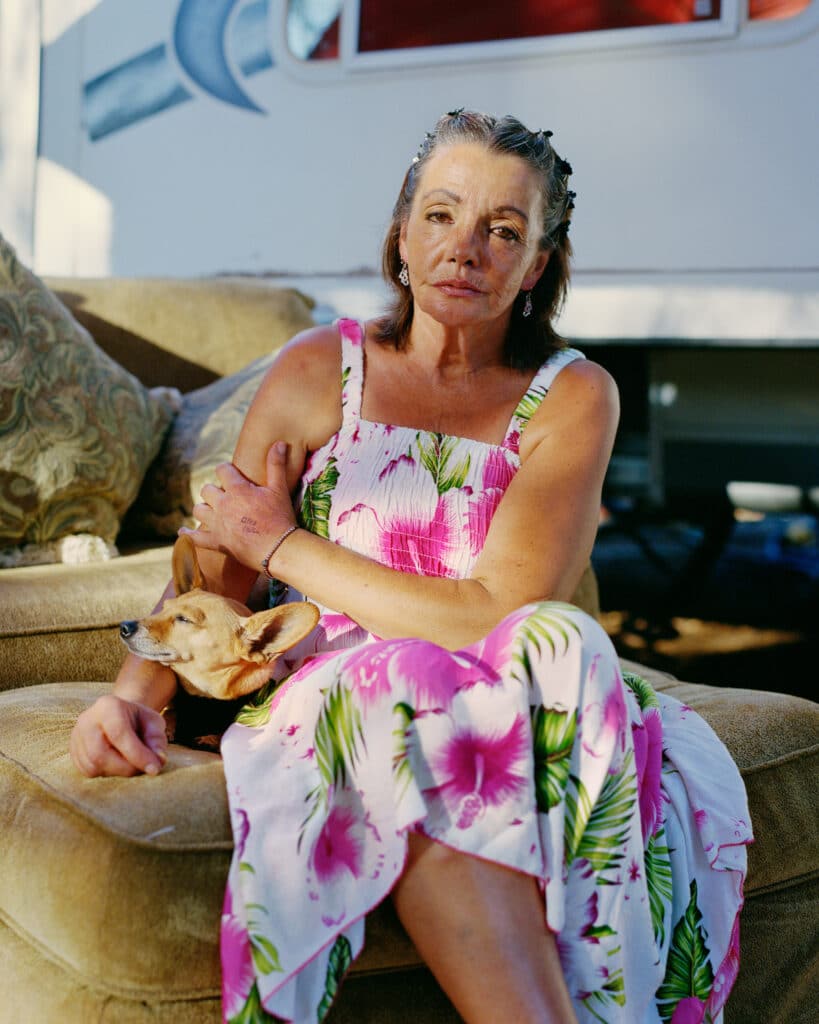
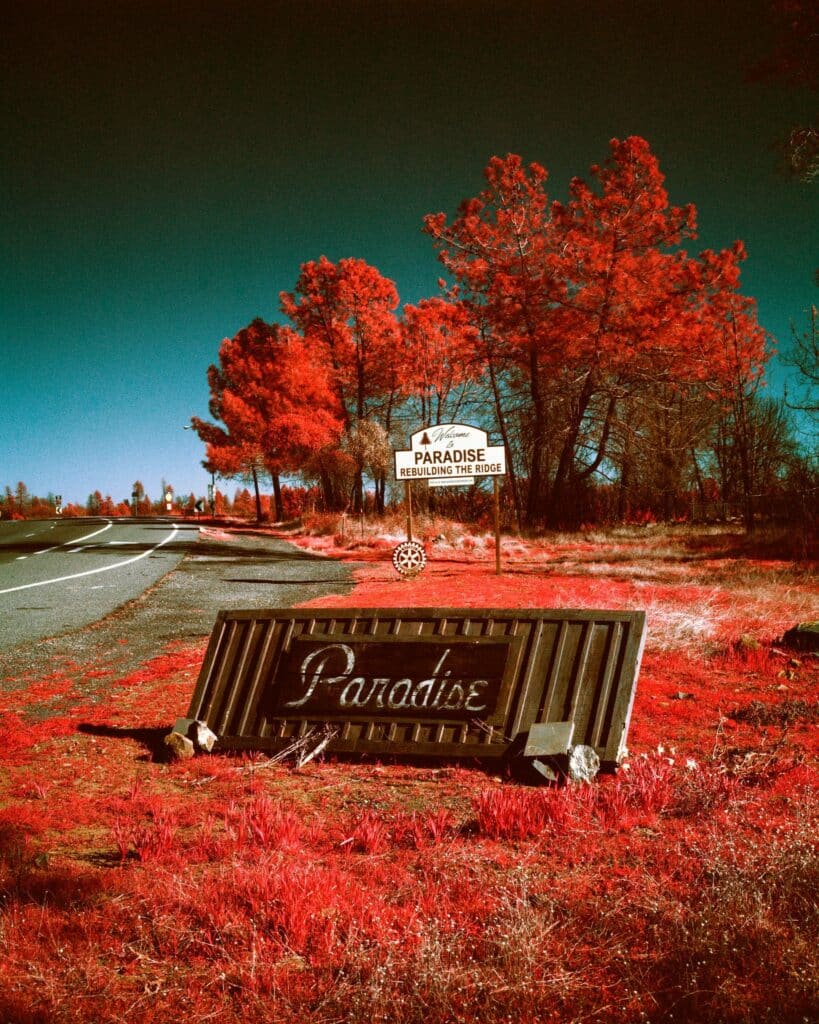
Other exhibitions focus on the passage of time and the future. As we enter the Anne de Bretagne pavilion, a young woman comes into view. We see her seated pensively at a burgundy Formica table; out taking stroll; or nude on a bed, her back turned to the camera. Beautiful, sometimes homely images are complemented by screens swarming with pixels that layer after layer construct Isis’s gentle, melancholy face. You’ve guessed it: the young woman isn’t real. She’s the brainchild of the duo Simon Brodbeck and Lucie de Barbuat.
“We did classic photo shoots, except that instead of posing a person, we created her on the computer, using cinematic special effects techniques,” explains Brodbeck. So far, Isis has not crossed paths with AI, but her creators intend to allow everyone to invite it into their productions. Isis may live a thousand possible lives, while as many avenues of reflection are opening up about the future of photography.
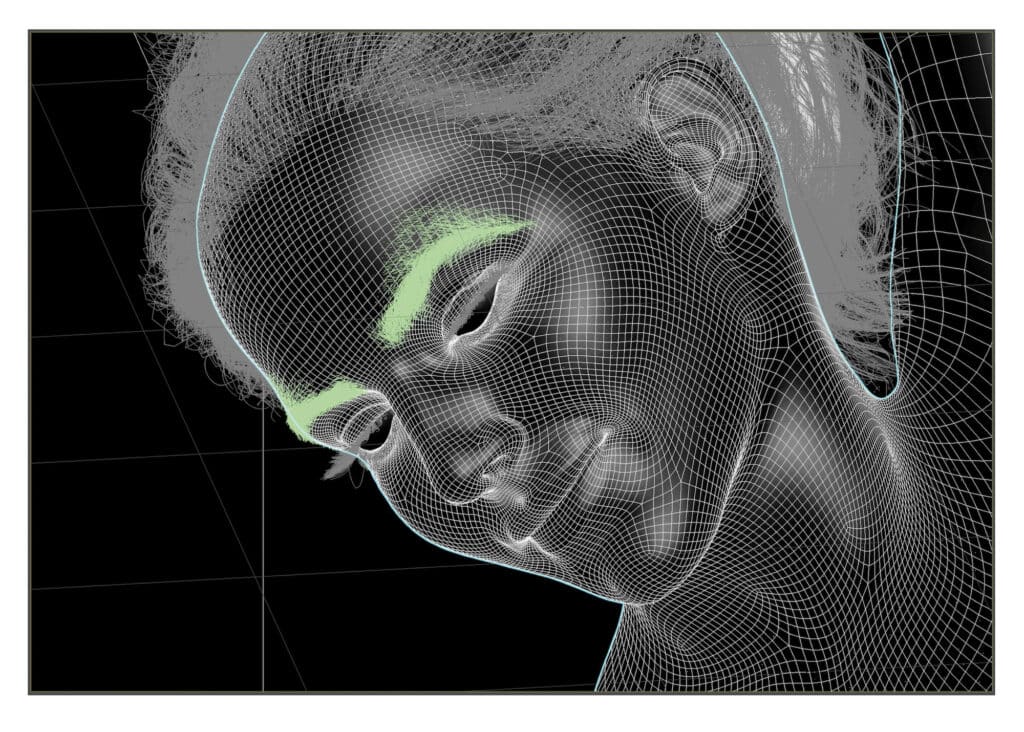
Alexa Brunet’s exhibition, on the top floor of the Natural History Museum, focuses on the evolution of digital technologies, and especially on the (harmful) impact they may have on our lives. The series, created in collaboration with sociologist Félix Tréguer, is a “slightly apocalyptic reinterpretation of Homer’s Odyssey. Ulysses faces the pitfalls of interlinked technologies.”
We follow him as he wanders through retro-futuristic settings teeming with detail. And while there are references to technologies, they were not used in the making of the photographs: there’s no post-production trickery. The mermaids floating around Ulysses? They’re painted on a transparency placed in front of the lens. The view of an oversized city from the hero’s window? A sticker affixed to the window to conceal the Ardèche scrubland. Technology ebbs and flows, always on the move.
E pur si muove! Festival Promenades Photographiques, various venues in and around Blois, until August 30.

